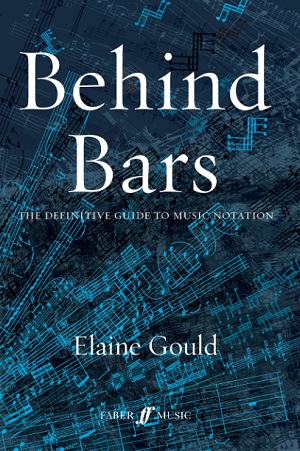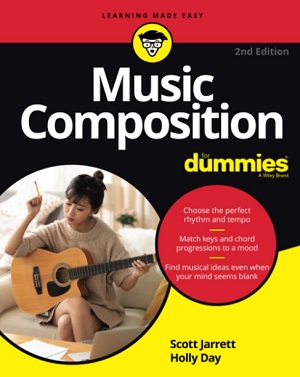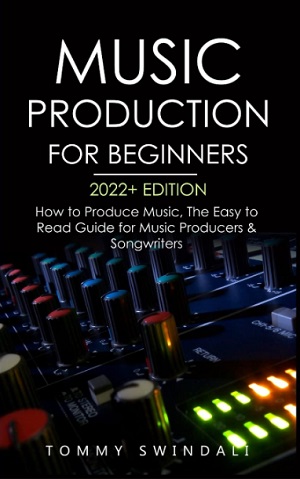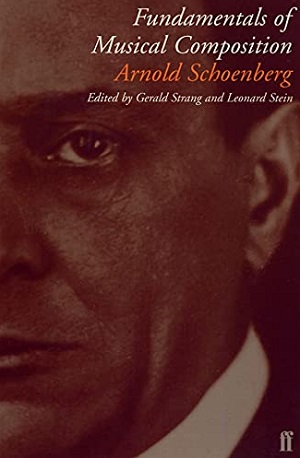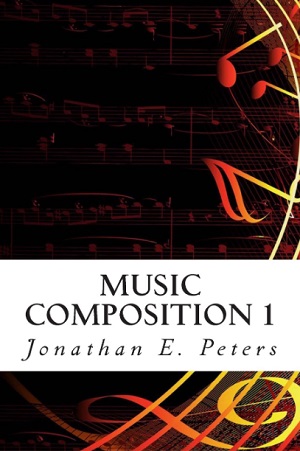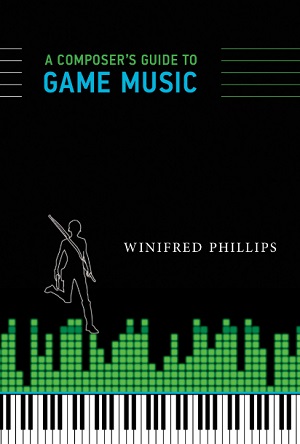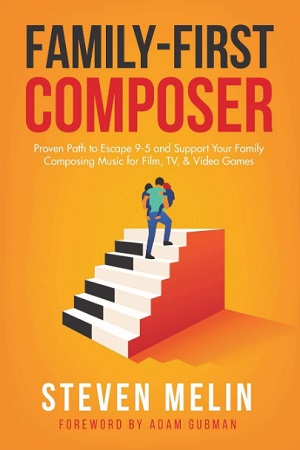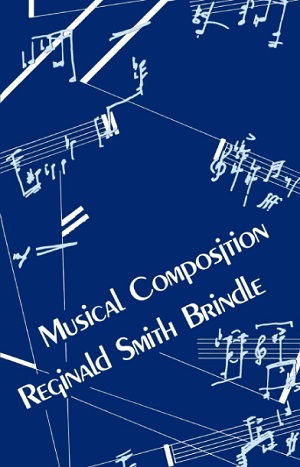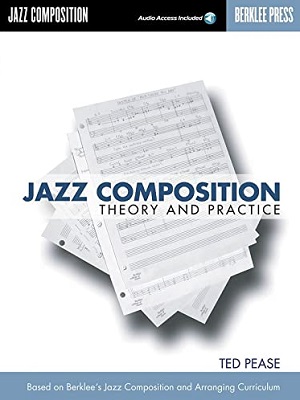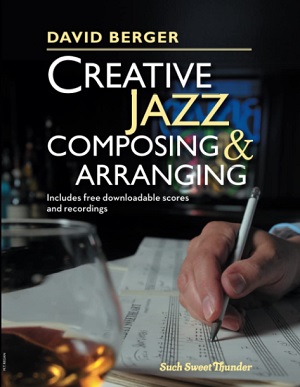Composing and writing music involves creating original music by combining melody, harmony, rhythm, and lyrics. It can be done using various musical instruments or digital means using music software. The process typically begins with an idea or concept, and the composer builds upon that idea to develop a complete piece of music.
Books can be a good way to learn music composition and writing, especially for learning music theory and composition techniques. Many books cover the basics of music theory, provide exercises for practicing composition, and analyze the works of famous composers.
We have curated a list of the best books for composing and writing music for different purposes and levels. So let’s dive right into it.
Top 14 Books For Composing & Arranging Music 2024
1. Behind Bars: The Definitive Guide to Music Notation (Faber Edition) By Elaine Gould
“Behind Bars: The Definitive Guide to Music Notation” is a book written by Elaine Gould and published by Faber Edition.
The book is a comprehensive guide to music notation and covers a wide range of topics, including notation conventions, score layout, and engraving techniques. It is considered a great resource for composers, arrangers, editors, engravers, and music students and enthusiasts. The book is widely used in music schools and conservatories as a textbook.
Key Features:
- Notation conventions
The book covers the basics of music notation, such as clefs, key signatures, time signatures, and note values. It also covers advanced topics such as rhythmic notation, articulation, and dynamic markings.
- Score layout
The book covers the layout of scores, including systems, staves, and page turns. It also covers rehearsal marks, tempo markings, and other performance indications.
- Engraving techniques
The book covers the technical aspects of engraving, including software and notation programs. It covers various symbols and notation conventions for different instruments and ensembles.
- Historical context
The book covers the history of music notation, including its evolution and the various styles and traditions of different cultures and historical periods. It also provides a wide range of exercises and examples to help you understand and apply the concepts discussed in the book.
- Writing for different instruments and ensembles
The book covers the specific notation conventions and techniques for instruments, like piano, guitar, violin, vocals, etc., and ensembles, such as orchestral, choir, and chamber music.
Good For:
“Behind Bars: The Definitive Guide to Music Notation” is good for many individuals and professionals, including Composers, arrangers, songwriters, Music editors and engravers, Music students and enthusiasts, Conductors and performers, and music teachers.
2. Musical Composition: Craft and Art By Alan Belkin
“Musical Composition: Craft and Art” is a book by Belkin, a Canadian musicologist, and composer.
The book explores the various elements of musical composition, including harmony, melody, and form, and how they can be used to create effective and expressive music. It is intended for composers and music lovers who want to understand the creative process of composing music.
Key Features:
- Detailed explanations of harmony, melody, and form
The book thoroughly explains the building blocks of music and how they can be used to create different types of compositions. Philosophically, it encourages composers to develop their unique style rather than simply imitating the music of others.
- The clear and concise writing style
The author presents complex concepts in an easy-to-understand manner, making the book accessible to composers and music enthusiasts. In addition, the book includes a wide variety of examples and exercises that help you apply the concepts discussed in the book to your compositions.
- Historical and cultural context
The book provides a historical and cultural context for the music discussed, helping you to understand how different musical traditions and styles have influenced the development of music over time.
- Analytical approach
The book also covers the analysis of musical composition and techniques like counterpoint, modulation, and orchestration. The author also discusses the role of technology in music composition and its impact on the creative process.
Good For:
Overall, “Musical Composition: Craft and Art” by Alan Belkin is a comprehensive guide to the craft and art of composing music that provides a deep understanding of the creative process and the tools and techniques needed to create effective and expressive music.
3. The Complete Idiot’s Guide to Music Composition
The “Complete Idiot’s Guide to Music Composition” is a book that aims to provide beginner composers with a comprehensive introduction to the basics of music composition.
The book covers melody, harmony, rhythm, and structure and includes exercises and examples to help you develop your composition skills. It is not a technical guide but a view of concepts and tools someone can use to start composing. The book is intended for those who have little or no experience in music composition but are interested and want to learn more.
Key Features:
- Comprehensive introduction
The book provides a comprehensive introduction to the fundamentals of music composition. It also includes additional resources, such s online audio examples and a companion website to supplement the material covered in the book.
- Clear explanations
The book’s explanations are written in a clear and easy-to-understand manner, making it accessible for you with little or no prior experience in music composition.
- Exercises and examples
The book covers a variety of musical styles, including classical, pop, rock, and jazz, to give you a well-rounded understanding of music composition. It also includes a variety of exercises and examples to help you practice and apply the concepts they are learning.
- Not a technical guide
The book is not a technical guide but a view of concepts and tools someone can use to start composing. It may not go into detail in certain areas or technical aspects of music composition. Still, it gives you a broad understanding of the subject and the direction to look for more information.
Good For:
The “Complete Idiot’s Guide to Music Composition” is intended for individuals who have little or no experience in music composition but are interested in learning more about it. The book is written in a beginner-friendly manner, and co.
It covers sins of music composition comprehensively and is accessible for you who may not have a lot of background knowledge in music theory or composition.
It is designed for anyone who wants to learn how to compose music, whether they want to write songs, create orchestral pieces, electronic, or anything in between. The book can be helpful for hobbyists, aspiring composers, songwriters or music producers, or anyone who wants to gain a deeper understanding of music composition.
4. Music Composition For Dummies By Scott Jarrett
“Music Composition For Dummies” is a book by Scott Jarrett that aims to teach beginners the basics of composing music.
The book covers melody, harmony, rhythm, and form and includes tips and exercises to help you develop your composing skills. It is published by the For Dummies series, which is known for providing clear and easy-to-understand explanations of complex subjects. The book is not available as an ebook, but you can find it in print or as an oak.
Key Features:
- Comprehensive content
The book is divided into six parts, termed Basics and Rhythm, Melody and Development, Harmony and Structure, Orchestration and Arrangement, The Part of Tens, and Appendixes, each covering the given topics with great detail and precision.
- Part of Tens
The book provides ten additional tips for composing music, such as using silence as an element of music, and ten famous composers with a brief introduction of their work. It also covers developing your composing skills, such as using chord progressions, experimenting with different rhythms, and listening to a wide various
- Practical methods
The book includes examples and illustrations to help you understand the concepts and techniques covered in the text. These visual elements, real-life examples, and tricks from the author’s experience as a composer enhance,e your learning.
- Multi-genre content
The book covers the basics of form and structure in music composition, including the use of sections, repetition, and contrast in different musical styles, including classical, pop, and jazz.
- Written by a professional
The author Scott Jarrett has written several books on music and has vast experience in teaching music composition, as a composer, performer, and music teacher, and has taught music composition and theory at the college level. He holds a master’s degree in Music Composition from the Manhattan School of Music and a Bachelor of Music degree from the Eastman School of Music.
Good For:
“Music Composition For Dummies” by Scott Jarrett is a beginner-friendly guide to music composition, ideal for individuals who have little or no prior knowledge of music composition, aspiring composers and songwriters, musicians who want to expand their knowledge and skills, music students, and anyone interested in music composition.
The book covers many topics and provides tips, exercises, and practical guidance for you and your composing skills.
5. Composing Electronic Music: A New Aesthetic 1st Edition By Curtis Roads
“Composing Electronic Music: A New Aesthetic” is a book by Roads that explores the history and techniques of electronic music composition.
It covers topics such as the history of electronic music, synthesis techniques, signal processing, and computer music programming. The book is aimed at composers, musicians, and music students who are learning about electronic music’s creative possibilities.
Key Features:
- History of electronic music
The book provides an overview of the development of electronic music, from early electronic instruments to modern digital synthesis techniques.
It also covers various synthesis techniques, such as subtractive synthesis, granular synthesis, frequency modulation synthesis, and e. It explains it can be used to create different sounds and textures in electronic music.
- Signal processing
The book describes various signal processing techniques, such as filtering, modulation, and spectral processing, and how they can manipulate electronic sounds. That section of the book is great for sound designers.
- Computer music programming
The book includes information on computer music programming, including an introduction to the programming language Csound, which is widely used in electronic music composition.
- Aesthetics of electronic music
The book also examines the aesthetics of electronic music and how it differs from traditional music composition. It also includes examples and case studies of electronic music compositions, illustrating concepts and techniques discussed in the text.
- Hands-on approach
The book is written in a hands-on approach with exercises, examples, and projects that help you to understand the concepts and apply them in real-world scenarios.
Good For:
“Composing Electronic Music: A New Aesthetic” is a great resource for musicians/composers, electronic music producers, beat makers, sound designers, film composers, Csound users, and anyone interested in the creative possibilities of electronic music composition, whether they are a beginner or an experienced musician.
6. Music Production For Beginners 2022+ Edition By Tommy Swindell
Music Production for Beginners 2022+ Edition by Tommy Swindali is an essential guide for any music producer looking to get the most out of their craft.
It covers the basics of music production, from recording to mixing and mastering, and is packed with valuable tips and tricks from acclaimed producer Swindali. It also includes a comprehensive collection of tutorials for beginners to advanced levels.
Key Features:
- Covers fundamentals first
The book starts with the basics of music production, like pitch, tempo, B.P.M., and various terms that a producer should know. Then it covers the fundamentals of music theory. That should give you a perfect bed for learning further, and this part is especially great for people new to music production.
- Comprehensive content
The book also covers topics like what kind of equipment you can have or buy. After that, it covers ways of producing and manipulating sounds, like sampling, virtual instruments, synthesizers, MIDI, and F.X. This section helps you start your beat-making and music-programming process.
- Practical tips
The author provides advice on how you can find suitable samples, how to tackle musician’s blocks and get the best creative output, and how you can share your demos and music and get signed or get a deal with a record label, management, a significant artist, or any music company.
- Sonics
The book discusses mixing and mastering and has chapters dedicated to these topics. Mixing and mastering are essential for songs, as they get them to sound at par with the industry standard. It also covers why you should master your music and other tips.
Good For:
Music Production for Beginners 2022+ Edition is a great resource for any music producer, especially beginners without formal music theory training. Swindali’s writing style is clear and engaging, making the book pleasurable. The author delves into topics such as EQing, compression, reverb, and delay, providing a comprehensive overview of these important concepts.
7. Fundamentals of Musical Composition By Arnold Schoenberg
“Fundamentals of Musical Composition” is a book by Arnold Schoenberg, an Austrian-American composer and music theorist.
The book was first published in 1947 and is considered a seminal work in the fishery. In it, Schoenberg lays out his theories on the nature of music and the principles of composition, including his ideas on atonality and the use of the twelve-tone technique. The book is considered a valuable resource for composers, music theorists, and student music student features.
- Atonality
The author presents his ideas on atonality, a style of music that does not conform to traditional tonal harmony. He argues that atonality allows for greater freedom in composition and can be used to create new and unique musical expressions.
- Twelve-tone technique
Schoenberg introduces the twelve-tone technique, a method of composition in which all twelve notes of the chromatic scale are used in a specific order, known as a tone row. He explains how this technique can create a sense of unity and coherence in a piece of music.
- Useful songwriting tools
The author discusses the various forms and structures used in music composition, such as the sonata form, and how they can be adapted and expanded to create new forms. In addition, he examines the principles of harmony and counterpoint and how they can be used to create tension and release in a piece of music.
- Music analysis
The book also includes Schoenberg’s approach to analyzing music, which he calls “developing variation,” a compositional technique that involves taking a simple melody and gradually transforming it into a more complex and developed work.
- Examples
The author also includes numerous examples and exercises in the book to illustrate his concepts and provide guidance for composers and students.
Good For:
“Fundamentals of Musical Composition” is primarily intended for composers, music theorists, and music students. It is also helpful for anyone interested in music composition, like music educators or music students, as it provides insights into the creative process and the principles that underlie the creation of music.
Finally, the book is also of interest to musicologists, as it provides an in-depth look at the ideas and theories of one of the most influential composers and music theorists of the 20th century.
8. Arranging & Composing By David Baker
“Arranging & Composing for the Small Ensemble” is a book by David Baker that focuses on the techniques and concepts involved in arranging and composing music for small jazz groups.
The book covers various genres, including chord progressions, voicings, melody writing, counterpoint, and orchestration. It also includes examples and exercises to help you develop your skills and apply the concepts presented in the book.
Additionally, the book provides examples of Baker’s arrangements and compositions, demonstrating the techniques discussed in the book.
Key Features:
- Author’s expertise
David Baker is a jazz educator, arranger, and composer. He has written over 100 books on jazz, including “Arranging & Composing for the Small Ensemble” and “The Jazz Style of John Coltrane: A Musical and Historical Perspective.”
He has also composed and arranged music for jazz ensembles of all sizes, from small groups to big bands. Baker was a professor at Indiana University’s prestigious Jacobs School of Music for many years and has also served as the director of jazz studies at several other universities.
He has also been a mentor to many prominent jazz musicians and educators.
- In-depth coverage of chord progressions
The book explains the various types of chord progressions used in jazz, including ii-V-I progressions, and how to use them in arrangements and compositions.
- Voicings and melody writing
The book covers the basics of voicings and how to use them to create interesting harmonic textures. It also includes information on how to write compelling melodies that complement the chords and harmonies.
- Counterpoint and orchestration
The book covers the principles of counterpoint, which is the art of combining melodies in a way that is harmonically interesting and pleasing to the ear. It also includes information on orchestration, arranging, and scoring music for different instruments.
- Written for jazz musicians, educators, and students
The book is intended for jazz musicians, educators, and students interested in learning about the process of arranging and composing for small jazz ensembles. It provides the technical and theoretical knowledge to create your arrangements and compositions.
Good For:
The book is intended for jazz musicians, educators, and students interested in learning about the process of arranging and composing for small jazz ensembles. Additionally, it can be used as a textbook for jazz arranging and composition courses.
9. Music Composition 1 By Jonathan E. Peters
Music Composition 1 by Jonathan E. Peters is an invaluable guide for any budding composer looking to develop their skills.
The book begins with a comprehensive introduction to the fundamentals of music composition, providing an understanding of the basics and covering topics such as harmony, counterpoint, and form. It then delves into more advanced concepts, such as orchestration and polyphony, and provides you with tips and tricks to help them get the most out of their compositions.
Key Features:
- Exercises and examples for easy learning
The book includes many helpful examples demonstrating how to apply the concepts discussed and exercises to help you further your understanding. They will keep you engrossed and also help you learn more engagingly.
- Focus on the creative aspect
What makes this book stand out, however, is its focus on the creative aspects of composition, such as the use of structure, melody, and rhythm to create memorable music. That gives a great perspective, apart from the technical information on songwriting.
- Comprehensive content
The book starts with Rhythmic Transcription, Motif, Phrase, Types of Phrases, Rhythmic Development, Conveying Mood through Rhythm, and Melodic Transcription, Motif, Phrases, periods, etc. Finally, it also covers chord tones, passing tones, suspension tones, resolution, and tension.
- Experienced author
Jonathan E. Peters is an acclaimed composer, arranger, and educator. He has a B.A. in Music from the University of Minnesota and has written and arranged for artists such as Mary J. Blige, Marvin Gaye, and Luther Vandross.
He has also composed music for films and television, including the Showtime series “The L Word.” He is an in-demand lecturer and has taught music composition and orchestration at many universities around the United States.
Good For:
Music Composition 1 by Jonathan E. Peters is great for aspiring composers looking to improve their skills. It contains a comprehensive introduction to the fundamentals of music composition and delves into more advanced topics, such as orchestration and polyphony.
Additionally, the book offers tips and tricks to help you get the most out of their compositions and many helpful examples and exercises. This book is ideal for anyone looking to develop their abilities as a composer, from beginners to more experienced musicians.
10. A Composer’s Guide to Game Music (The M.I.T. Press) By Winifred Phillips
“A Composer’s Guide to Game Music” is a book by Winifred Phillips that provides an in-depth look at the process of composing music for video games.
The book covers a wide range of topics, including the history of game music, the different types of game music, and the tools and techniques used to create game music. It includes interviews with industry professionals, case studies, and practical exercises.
The book is published by The M.I.T. Press and is aimed at composers, game developers, and game music enthusiasts.
Key Features:
- Specially designed for game sound
Game music is the music used in video games to enhance the gaming experience, and it is composed and produced specifically for the game. It is designed to complement the gameplay, setting, and overall mood of the game. Game music can be created using various tools and techniques, including MIDI, digital audio workstations, and virtual instruments.
It can be used to enhance the emotional impact of the game, and it can be used to create a sense of tension, suspense, and drama or to reflect the game’s setting or tone. The book covers everything in detail.
- Comprehensive coverage of the history and evolution of game music
The book provides an overview of the development of game music from early arcade games to modern console and mobile games. It also covers various types of game music, such as linear, adaptive, and interactive music, and explains the unique characteristics of each.
- Interviews with industry professionals
The book includes interviews with well-known game music composers and audio directors, providing insight into the creative process and challenges of composing game music. In addition, there are case studies of specific games and their music and practical exercises that allow you to apply the concepts and techniques discussed in the book.
- Written by an experienced and well-recognized game music composer
The author, Winifred Phillips, is an award-winning game music composer with many years of experience in the industry, providing a unique perspective and valuable expertise. She has composed music for numerous high-profile video games, including the “God of War” franchise, “LittleBigPlanet,” “The Sims” franchise, and “Speed Racer: The Video Game,” among others.
Next, she is also an adjunct professor at the New York University Game Center, where she teaches a course on game music composition. Lastly, Phillips has won several awards for her game music compositions, including the Hollywood Music in Media Award, the G.A.N.G. Award, and the International Film Music Critics Award.
Good For:
“A Composer’s Guide to Game Music” by Winifred Phillips is a comprehensive and informative book that is well-suited for a wide range of readers, including composers looking to break into the game music industry, game developers looking to enhance the emotional impact of their games, game music enthusiasts, music students, and educators and professors teaching game music or audio for games.
The book offers a detailed overview of the process of composing music for video games, including the history of game music, the different types of game music, and the tools and techniques used to create game music. It provides a unique perspective on the role of music in video games and is a valuable resource for anyone interested in the history, theory, and practice of game music.
11. Family-First Composer By Steven Melin
Family-First Composer by Steven Melin is an inspiring look into the life and work of a professional composer.
Melin takes you on a journey through his career, starting with his childhood and progressing through his successes and failures as an adult. He provides an in-depth look at the challenges and rewards of writing music for television, film, and games. He also shares his experiences working with different ensembles, from small jazz groups to symphony orchestras.
Key Features:
- Personal insights
The author offers valuable insight into the creative process, from analyzing a script to working with a director. Along the way, Melin also discovers the importance of family, personally and professionally.
- Compelling & introspective introduction
The book comprises six parts, such that the first part encourages you to find your “WHY.” This part also introduces you to the main character and his early life as a young musician.
- How to tackle failures in a difficult industry
The book focuses on the author’s difficulties and successes in his professional life. Further, he also discusses his family’s role in work and how family provided both encouragement and inspiration. The book also discusses the creative process of writing, from analyzing a script to working with a director.
- Music career navigation
The book looks at the different ensembles Melin has worked with and his experience with them, and also focuses on his journey to success, including his successes and failures.
It looks more specifically at Melin’s career and how he has adapted to changing industry trends and technology. Further, he talks about his plans and concludes by celebrating his achievements and reflecting on the importance of family.
- Covers all aspects of a musician’s life
The book talks about everything from the creative process to the music business to how to achieve success in it, along with discussing the personal and family life of the author. It also discusses helpful and practical insights on building a demo reel, portfolio, community interaction, more profound coaching, and more.
Good For:
Family-First Composer by Steven Melin is an excellent read for anyone interested in music, composition, and the creative process. Musicians, composers, directors, and music lovers will find something valuable in this book. Melin’s personal story makes for an inspiring read as he shares his successes and failures as a composer.
12. Musical Composition By Reginald Smith Brindle
Reginald Smith Brindle’s Musical Composition is a comprehensive and thought-provoking introduction to music composition.
It covers various topics, from the basics of harmony and melody to more advanced topics such as counterpoint and orchestration. Brindle’s easy-to-follow writing style makes the book accessible to readers of all levels while providing enough depth and detail to make it a valuable resource for more experienced composers.
Key Features:
- Experienced author
Reginald Smith Brindle was an English composer and music theorist. He studied at the Royal College of Music in London, where he later became a professor and composed many pieces of classical music, including a symphony, several string quartets, and several works for solo piano.
Reginald Smith Brindle was known for his ability to combine traditional and modern compositional techniques and for his experiments with tonality, dissonance, and rhythm.
- Engaging read
The book contains helpful examples and exercises, making it an excellent tool for those looking to improve their compositional skills. It also provides tips on getting the most out of your compositions and encourages you to think differently about music, which is essential for any aspiring composer.
- Vocal Writing
The book covers vocal writing in great detail. He discusses the fundamentals of vocal writing, including tone production, pitch, articulation, and phrasing. He also provides exercises and examples to help you understand and apply these concepts.
He further explores the various styles of vocal writing, such as recitative, aria, and choral writing, and guides how to write effective vocal parts for each style. He also offers advice on how to write for different types of vocalists, such as sopranos, tenors, and baritones.
- Technical expansions
The author explains the various forms of expansion, such as accelerando, rallentando, and crescendo. He details the different types of cadences and their functions and discusses the various techniques and conventions used in the harmonic expansion. He also explores the use of counterpoint and modulation in expanding musical pieces.
- Serialism and indeterminacy
The author examines the history of serialism, the various types of serialism, and how it relates to different compositional techniques. He also discusses the various types of indeterminacy, such as aleatoric, improvisatory, and chance operations, and how they can be used in the composition.
- Scores
The book offers a comprehensive overview of graph scores, guiding how to create and interpret them. It also explores improvisation and text scores, discussing their use in composition and their implications for the creative process.
Good For:
Reginald Smith Brindle’s Musical Composition is an excellent book for anyone interested in improving their musical composition skills. It has an intuitive and friendly writing style, and its comprehensive coverage of topics makes it a great resource for those looking to become more proficient composers.
13. Jazz Composition: Theory and Practice By Ted Pease
“Jazz Composition: Theory and Practice” is a book by Ted Pease, a jazz pianist, composer, and educator.
The book is a comprehensive guide to jazz composition, covering many topics, including harmony, melody, form, and rhythm. It also includes many examples and exercises to help you develop your skills as a jazz composer.
The book is aimed at both students and professionals and provides a solid foundation for understanding the principles of jazz composition.
Key Features:
- Harmony
The book covers the basics of jazz harmony, including chord progressions, voicings, and substitutions. It also explores more advanced harmonic concepts such as modal harmony, dissonance, and resolutions.
- Melody
The book covers the principles of melody in jazz, including scales, modes, and motifs. It also discusses dissonance, ornamentation, and phrasing in jazz melodies.
- Form
The book covers the various forms used in jazz composition, such as the 12-bar blues, 32-bar song form, and the A.A.B.A. form. It also covers the use of paper in jazz improvisation and how to create forms for original compositions.
- Rhythm
The book covers the basics of rhythm in jazz, including the use of syncopation, polyrhythms, and odd meters. It also covers using rhythm in form and melody and how to create effective rhythmic patterns.
- Examples and exercises
Throughout the book, many examples and exercises are provided to help you understand and apply the concepts discussed in the text. These examples and activities are designed to help you develop your skills as a jazz composer.
The book is written clearly and concisely, making it accessible to students and professionals. It is considered a valuable resource for those interested in jazz composition.
Good For:
“Jazz Composition: Theory and Practice” by Ted Pease is a comprehensive guide to the art of jazz composition and is well-suited for jazz students and musicians, music educators, composers, and music enthusiasts who want to learn more about jazz composition.
14. Creative Jazz Composing and Arranging By David Berger
“Creative Jazz Composing and Arranging” is a book by David Berger, a jazz arranger and composer.
The book is intended for jazz musicians and composers and covers various topics related to jazz composition and arranging, including harmony, melody, form, and orchestration. It is designed to help jazz musicians develop their skills in creating original pieces of music and arranging existing tunes in a jazz style.
Key Features:
- Detailed explanations of jazz harmony and melody
The book provides an in-depth understanding of jazz harmony and melody, including chord progressions, scales, and modes. It covers the basics of jazz harmony and melody and delves into more advanced concepts, such as substitutions, reharmonization, and dissonance.
- Techniques for creating effective forms in jazz compositions
The book explains how to create effective forms in jazz compositions, including A.A.B.A., A.B.A., and thoroughly-composed forms. It also covers modulation and creating tension and release in a composition.
- Strategies for orchestration and arranging
The book offers strategies for orchestration and arranging, including using voicings, counterpoint, and various instrumental combinations. It covers how to create a sense of balance and movement in an arrangement and achieve a desired mood or atmosphere.
- In-depth analysis of jazz compositions
The book includes an in-depth analysis of jazz compositions by famous jazz composers such as Duke Ellington, Charles Mingus, and Thelonious Monk. These examples help you understand the creative process behind jazz compositions and arranging.
- A wide range of exercises and examples
The book provides a wide range of exercises and examples that illustrate the concepts discussed in the book, making it easy for you to apply the ideas to their compositions and arrangements.
Good For:
“Creative Jazz Composing and Arranging” is a book intended for jazz musicians and composers, particularly those looking to improve their skills in composing and arranging, jazz students and educators, musicians looking to expand their knowledge of jazz theory, and those who want to understand the creative process behind jazz compositions and to arrange.
The book covers various aspects of jazz theory, composition and arranging techniques, orchestration, and in-depth analysis of jazz compositions by famous jazz composers. It is intended for people who already understand jazz and music theory and want to deepen their knowledge and skills in jazz composing and arranging.
Bonus:
Composing with Constraints: 100 Practical Exercises in Music Composition By Jorge Variego
“Composing with Constraints: 100 Practical Exercises in Music Composition” is a book by Jorge Variego that offers a collection of exercises designed to help composers develop their skills and creativity through various constraints.
The exercises in the book focus on various aspects of music composition, including melody, harmony, rhythm, and form. The book is intended for composers of all skill levels and may be used as a self-study guide or as a textbook for a music composition course. It aims to help composers develop their ability to work within constraints, which can be an important skill for creating unique and interesting music.
Key Features:
- Variety of exercises
The book includes 100 exercises that cover a wide range of aspects of music composition, including melody, harmony, rhythm, and form. Each exercise is designed to help composers develop a specific skill or explore a particular compositional technique.
- Progressive difficulty
The exercises in the book are arranged progressively, starting with simple tasks and gradually becoming more complex. This allows composers to build their skills and knowledge gradually.
- Emphasis on constraints
The book is based on the idea that working within constraints can be an important tool for composers. Many of the exercises in the book involve composers working with specific constraints, such as using a limited number of pitches or creating a piece in a specific form.
- Suitable for all skill levels
The book is intended for composers of all skill levels, beginner or advanced. It can be used as a self-study guide or as a textbook for a music composition course.
- Examples and analysis
The book includes examples of compositions created using the exercises and an analysis of the compositions to help composers understand the techniques used.
- Flexible approach
The book encourages composers to think creatively and to experiment with different approaches to the exercises rather than providing a strict set of rules to follow.
Good For:
“Composing with Constraints: 100 Practical Exercises in Music Composition” by Jorge Variego is a great resource for composers of all skill levels. Whether you are a beginner or an advanced composer, the book can help you develop your skills and creativity.
The book is designed to be used as a self-study guide, so it is suitable for anyone who wants to improve their composing skills. The progressive difficulty of the exercises allows you to gradually build your skills and knowledge, starting with simple tasks and moving on to more complex ones.
Conclusion
Songwriting and composition can be a complex process, especially with the tools that are available today. You can use anything from a D.A.W. to an instrument to the recording app on your phone to aid this process.
If you are a music producer looking to learn the basics of music production, Music Production for Beginners 2022+ Edition by Tommy Swindali is a book that may suit you, as it covers all fundamental topics like music theory, effects, mixing, and mastering.
Next, Composing Electronic Music: A New Aesthetic can be a good choice for electronic music production and learning to produce music using software and synthesizers. Further, you can refer to the book: “A Composer’s Guide to Game Music” if you are interested in learning about the basics of game sound, as the book covers everything from game music types like linear, adaptive, and interactive to its development.
Next, Jazz Composition: Theory and Practice is a great read for jazz musicians, but the book requires some level of experience and knowledge as a musician. Further, some general books for learning music composition and songwriting are Behind Bars: The Definitive Guide to Music Notation and Musical Composition: Craft and Art, as they cover the topics in great depth and detail.
Lastly, if you are a beginner, Complete Idiot’s Guide to Music Composition and Music Composition For Dummies are great options. They start with the basic concepts and discuss more advanced ideas, giving you a 360-degree understanding of the topic. I hope the article was of help. Thank you for reading.

Shaurya Bhatia, is an Indian Music Producer, Composer, Rapper & Performer, who goes by the stage name MC SNUB, and is also 1/2 of the Indian pop music duo, called “babyface”. A certified Audio Engineer & Music Producer, and a practicing musician & rapper for more than 6 years, Shaurya has worked on projects of various genres and has also been a teaching faculty at Spin Gurus DJ Academy.


